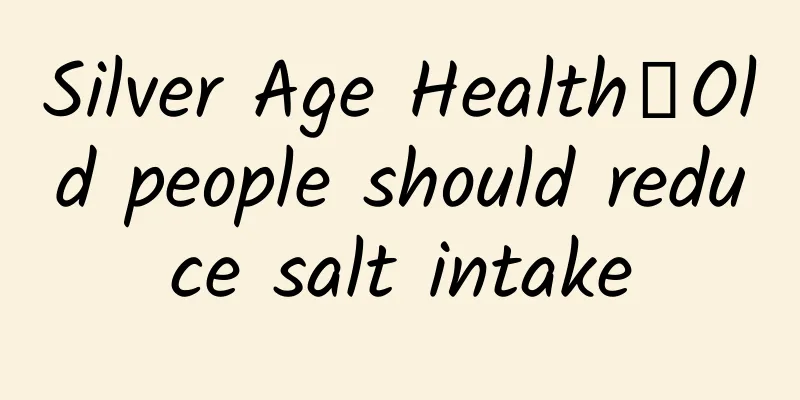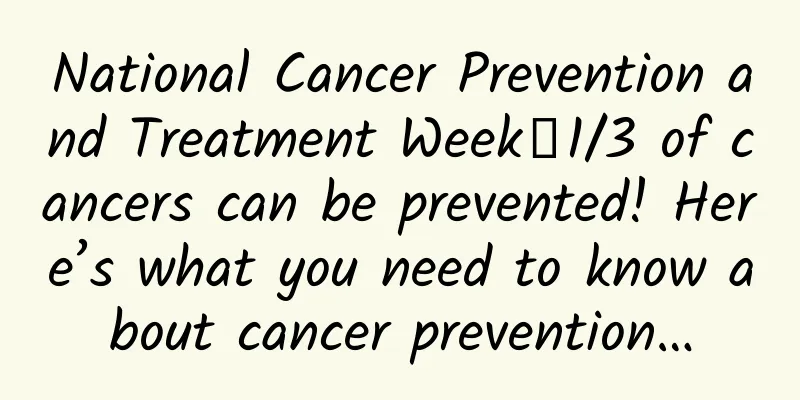Silver Age Health丨Old people should reduce salt intake

|
As the aging of the Chinese population intensifies, the health problems of the elderly are receiving increasing attention. A high-salt diet is closely related to a variety of chronic diseases, such as hypertension, cardiovascular disease, and kidney disease. However, due to the deterioration of the taste buds of the elderly, they often have a stronger taste for salt, which poses a challenge to salt reduction. This article aims to explore how to effectively reduce salt intake for the elderly with a strong taste for salt, combining data analysis and case support, while reflecting the differences between the north and south of my country. ▏The current status of salt intake among the elderly in my country and the north-south differences 1. Overall salt intake According to relevant research, the average cooking salt intake of Chinese residents from 2017 to 2023 is 9.3 g/d, far exceeding the World Health Organization's recommended standard of no more than 5g per adult per day. This high salt intake is more prominent among the elderly, whose taste sensitivity decreases, leading to an increased demand for salty taste and, in turn, more salt intake. 2. North-South Differences There are significant differences in dietary habits between the north and south of my country, and this difference is also reflected in salt intake. The diet in the north is generally salty, and salt intake is higher than in the south. For example, the nursing home population in the north showed a higher sodium intake in the study, and the effect of salt reduction intervention was easier to observe. In addition, although the overall salt intake in the southern region is relatively low, the diet is mainly composed of processed and pickled foods, and the high-salt properties of these foods make the salt intake not to be ignored. ▏Definition and harm of high-salt diet I. Definition A high-salt diet usually refers to a daily salt intake that exceeds the 5 grams recommended by the World Health Organization. In my country, the average salt intake of adults is about twice the healthy recommended amount. Due to the loss of taste, the elderly often need more salt to stimulate their appetite, making it easier for them to exceed the salt intake standard. 2. Harm of high-salt diet in the elderly 1. Hypertension A high-salt diet is an important risk factor for hypertension. When the sodium ions in salt enter the blood, they will cause water and sodium retention, leading to an increase in blood volume, which will increase blood pressure. In addition, a high-salt diet will activate the renin-angiotensin system, causing vasoconstriction and further increasing blood pressure. Studies have shown that reducing salt intake can significantly lower blood pressure. 2. Cardiovascular disease A high-salt diet can lead to arteriosclerosis and increase the risk of cardiovascular disease. Excessive salt intake can cause edema of vascular smooth muscle cells, narrow the blood vessel lumen, and increase the burden on the heart. In addition, a high-salt diet can increase blood viscosity, induce atherosclerosis and thrombosis, and thus increase the incidence of coronary heart disease, myocardial infarction, and stroke. 3. Kidney disease The kidney is an important organ for excreting excess salt from the body. Long-term high-salt diet will increase the burden on the kidneys and cause a gradual decline in kidney function. A high-salt diet will also increase the glomerular filtration rate, damage the renal tubules, and further affect kidney function. For the elderly, kidney function itself has already degenerated, and a high-salt diet is more likely to cause kidney disease. 4. Osteoporosis A high-salt diet can lead to calcium loss and increase the risk of osteoporosis. Salt intake needs to be excreted through the kidneys, and the process of sodium excretion is accompanied by calcium loss. In addition, a high-salt diet can inhibit the function of osteoblasts and disrupt the dynamic balance of bone metabolism. The high-salt diet has a particularly significant impact on the bone health of the elderly due to their decreased bone metabolism capacity. 5. Gastric diseases A high-salt diet can irritate the gastric mucosa, cause the gastric wall cells to fall off, and increase the risk of gastritis and gastric ulcers. In addition, salt-cured foods may contain harmful substances such as nitrites, and long-term intake will increase the risk of gastric cancer. 6. Other hazards A high-salt diet may also lead to other health problems such as obesity, edema, diabetes, etc. In addition, a high-salt diet may affect sleep quality, leading to insomnia and dreaminess. 3. Reasons for high-salt diet in the elderly Ø Decreased sense of taste: As people age, they become less sensitive to salty taste and need more salt to stimulate their appetite; ØEating habits: The heavy-tasting eating habits formed over a long period of time are difficult to change; Ø Processed food intake: Many processed and preserved foods are high in salt, and older people may consume them frequently for convenience. ▏Salt reduction strategies and methods 1. Use low-sodium salt Low-sodium salt is an effective salt-reducing substitute. Its saltiness is similar to that of ordinary salt, but it has a lower sodium content and increases potassium intake. Studies have shown that the use of low-sodium salt can significantly reduce the risk of stroke, cardiovascular events and all-cause mortality. For example, in a study conducted in 600 villages in five provinces in northern my country, the incidence of cardiovascular events in the intervention group using low-sodium salt was significantly reduced. 2. Quantified salt The amount of salt used can be effectively controlled by using a quantitative salt spoon. This method is simple and easy to use and suitable for home use. For example, it is recommended that adults should not consume more than 5 g of salt per day. The quantitative salt spoon can intuitively control the amount of salt used. 3. Reduce the intake of high-salt foods. Preserved foods and processed foods are the main sources of high-salt intake. The elderly should try to reduce the intake of such foods and cook with fresh ingredients instead. For example, pickled foods produce nitrites during the pickling process, which is harmful to human health. 4. Use natural seasonings In addition to salt, natural seasonings such as ginger, onion, and garlic can add flavor to food while reducing the amount of salt used. In addition, ingredients such as edible fungi, tomatoes, and lemons can also provide umami flavor and help improve the taste of food. 5. Gradually change the taste. The taste habits of the elderly are not static. By gradually reducing the amount of salt, they can gradually adapt to a lighter taste. For example, you can gradually reduce the amount of salt used in cooking and increase the use of other seasonings. ▏Some dishes suitable for elderly people to reduce salt intake 1. Principles of low-salt cooking ØReduce the use of salt: Try to use natural ingredients to replace salt, such as lemon juice, herbs, ginger and garlic; Ø Choose healthy cooking methods: mainly steaming, boiling, stewing and baking, and avoid frying and over-processing; ØIncrease the intake of vegetables and fruits: Vegetables and fruits are rich in potassium, which helps balance the sodium level in the body; ØUse low-sodium seasonings: such as low-sodium soy sauce, balsamic vinegar, ketchup, etc. 2. Low-salt recipes suitable for the elderly 1. Steamed salmon Ingredients: 200g salmon 1 lemon Olive oil (appropriate amount) Herbs (such as rosemary) appropriate amount Ginger slices appropriate amount Chopped garlic appropriate amount A little salt Method: Wash the salmon, cut into thick slices, and place on a plate. Place ginger slices and herbs on the salmon, drizzle with a small amount of olive oil, and sprinkle with a little salt. Place the plate in a steamer and steam over high heat for 10-15 minutes until the fish is cooked through. After steaming, squeeze lemon juice on it and sprinkle with minced garlic. 2. Mushroom and Tofu Soup Ingredients: 200g fresh mushrooms, 1 piece of tofu, 1 scallion, 2 slices of ginger, some salt, some water Method: Wash the mushrooms, remove the roots, and slice them; cut the tofu into small pieces. Add appropriate amount of water to the pot, add scallion and ginger slices, boil over high heat and remove from the water. Add the mushrooms and tofu, simmer over low heat for 10 minutes, and add a little salt to taste. 3. Stir-fried zucchini Ingredients: 300g zucchini, some olive oil, a little salt Method: Peel the zucchini and cut into thin slices. Add an appropriate amount of olive oil to the pan, heat it up, add the zucchini, and stir-fry quickly for 1-2 minutes. Add a little salt to taste and continue to stir-fry for 1 minute. 4. Tomato beef brisket Ingredients: 300g beef brisket, 2 tomatoes, 1 onion, ginger and garlic, star anise and cinnamon, salt, light soy sauce and dark soy sauce, tomato sauce Method: Cut the beef brisket into small pieces, blanch it in water and set aside. Dice the tomatoes, shred the onions, and mince the ginger and garlic. Add oil to the pan, add the onions and fry until soft, then add the beef brisket and stir-fry until it changes color. Add the ginger, garlic, star anise, and cinnamon, stir-fry until fragrant, then add the tomato pieces and stir-fry until the juice comes out. Add appropriate amount of boiling water, salt, light soy sauce, and dark soy sauce, and simmer on low heat for 1 hour. Finally, add the tomato sauce and continue to cook for 10 minutes, sprinkle with chopped green onions. 5. Pan-fried hairtail Ingredients: 300g hairtail fish, some ginger and green onion, some salt and cooking wine, some flour or starch, some vegetable oil Method: Wash the hairtail, cut it into sections, add shredded ginger, scallion, salt, and cooking wine and marinate for 20 minutes. Prepare an appropriate amount of flour or starch, and evenly coat the marinated hairtail with a layer of flour. Add oil to the pan, put the hairtail in after the oil is hot, and fry on low heat until both sides are golden brown. ▏Case study on salt reduction for the elderly 1. Salt reduction practice in nursing homes in the north In a salt reduction study conducted in a nursing home in the north, the research team adopted the strategy of replacing ordinary salt with low-sodium salt. The results showed that the systolic and diastolic blood pressures of the elderly who used low-sodium salt decreased by an average of 7.1 mmHg and 1.9 mmHg, respectively, and major cardiovascular events decreased by 40%. This case shows that low-sodium salt is a simple and effective salt reduction strategy, especially suitable for nursing homes with group meals. 2. Salt reduction intervention in southern communities In a salt reduction campaign carried out in a southern community, the research team promoted the use of low-sodium salt and encouraged residents to reduce their intake of high-salt foods through community publicity and family guidance. The results showed that the salt intake of community residents was significantly reduced, and the incidence of hypertension also decreased. This case shows that community intervention and family guidance are important means to promote salt reduction actions, especially in the southern region, where salt intake can be effectively reduced by improving eating habits. 3. Impact of North-South Differences on Salt Reduction Strategies 1. Northern Region The diet in the northern region is salty and the salt intake is high. The focus of salt reduction intervention should be on promoting low-sodium salt and controlling cooking salt. For example, by promoting low-sodium salt in nursing homes and communities, salt intake and blood pressure can be effectively reduced. 2. Southern Region Although the overall salt intake in the southern region is relatively low, due to the high amount of processed and preserved foods in the diet, the salt reduction strategy should focus on reducing the intake of these high-salt foods. For example, through community publicity and family guidance, residents are encouraged to choose fresh ingredients and reduce the intake of processed foods. ▏Implementation and promotion of salt reduction action 1. Family level The family is an important place for salt reduction. Family chefs should master the knowledge of salt reduction and gradually change the family's eating habits by using low-sodium salt, quantitative salt spoons and natural seasonings. For example, family chefs can reduce the amount of salt used in cooking and increase the use of other seasonings to gradually cultivate family members' light taste. 2. Community level The community is an important platform for promoting salt reduction actions. Through community publicity, health lectures and family guidance, residents' awareness and motivation for salt reduction can be improved. For example, communities can organize salt reduction campaigns, distribute low-sodium salt and quantitative salt spoons to residents, and encourage them to reduce their intake of high-salt foods. Salt reduction is an important measure to prevent chronic diseases, especially for the elderly who have a strong taste for food. By using low-sodium salt, quantifying salt, reducing the intake of high-salt foods, and gradually changing tastes, salt intake and blood pressure can be effectively reduced. There are differences in dietary habits and salt intake between the north and south of my country. Salt reduction strategies should be adapted to local conditions. The northern region should focus on promoting low-sodium salt and controlling cooking salt, while the southern region should focus on reducing the intake of processed and preserved foods. Families and communities should work together to promote the implementation of salt reduction actions and safeguard the health of the elderly. (Picture from the Internet) Author | Han Mei is a practicing pharmacist who has worked in a well-known national tertiary hospital for more than 30 years and has rich medical care experience. She has represented the hospital on many occasions to go out for exchanges and study. She is an expert in food hygiene and nutrition, has a national nutritionist qualification, and is a science enthusiast. First review | Chen Jiaqi, Li Shuhao Second review | Wei Xinghua Final review | Han Yonglin |
<<: Every year, 650,000 people die from influenza worldwide, while tuberculosis kills 1.25 million!
>>: I am always tired. What’s wrong with my body?
Recommend
Prevention and treatment of breast disease
The pressure of life in modern society is increas...
What causes blood clots during menstruation in women?
For women, they basically feel a little annoyed w...
Will eating cold food during breastfeeding cause milk to dry up?
During breastfeeding, do not eat raw, cold or sti...
What should women do if they have lower abdominal pain when urinating?
Some women find a dull pain in their lower abdome...
What to do if you have body odor after giving birth
After giving birth, every mother needs to pay att...
Endocrine examination costs
Endocrine examination is a broad definition that ...
Why do the leaves of the water-grown lucky bamboo turn yellow? What should I do if the leaves of the water-grown lucky bamboo turn yellow?
Lucky bamboo is very common in our daily life. Ma...
What are the chances of getting pregnant at 45?
After the relaxation of the two-child policy, man...
What are the benefits and effects of purple sweet potato porridge? Is purple sweet potato porridge high in calories?
Purple sweet potato porridge is a nutritious and ...
What to eat during menstruation
Many female friends pay attention to diet and var...
Are these "popular" eating habits really healthy? Let's reveal the truth
"Bamboo charcoal food" detoxifies and n...
Can I drink Sanjiu Ganmao Ling Granules during breastfeeding?
Sanjiu Cold Relief is a very popular cold remedy ...
I took loratadine during early pregnancy.
Many pregnant women realize their pregnancy late ...
What can't you eat with the new coronavirus? Dietary taboos for the new coronavirus
We all know that the new coronavirus is a new typ...
What is the cause of vaginal bleeding that is very similar to menstruation?
Many women often suffer from various gynecologica...




![[Medical Q&A] If you have osteoporosis, is it enough to just take calcium tablets?](/upload/images/67f0fe333a1d9.webp)




